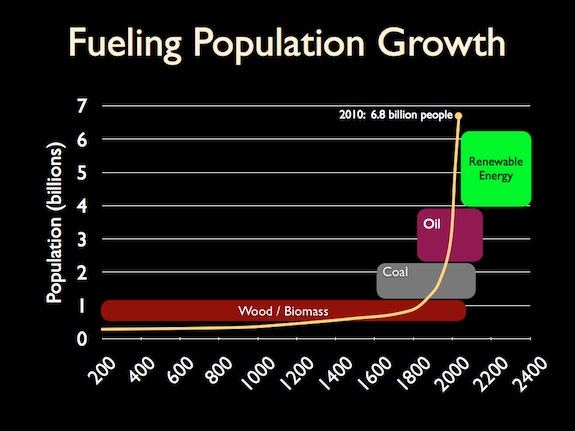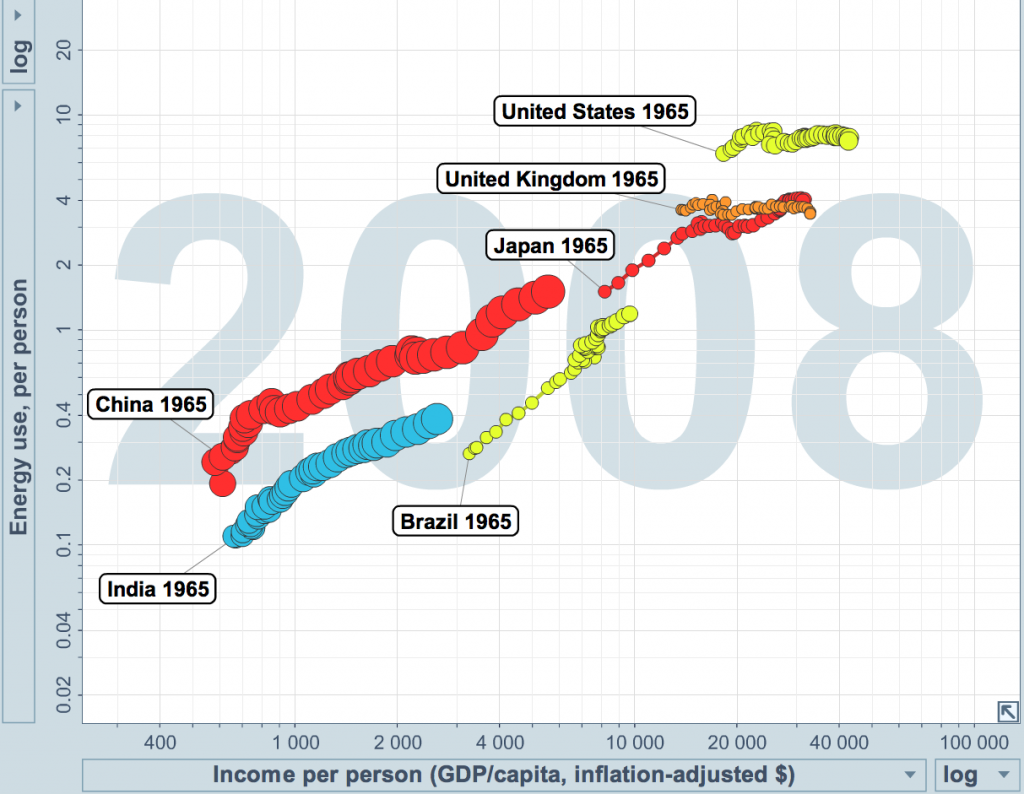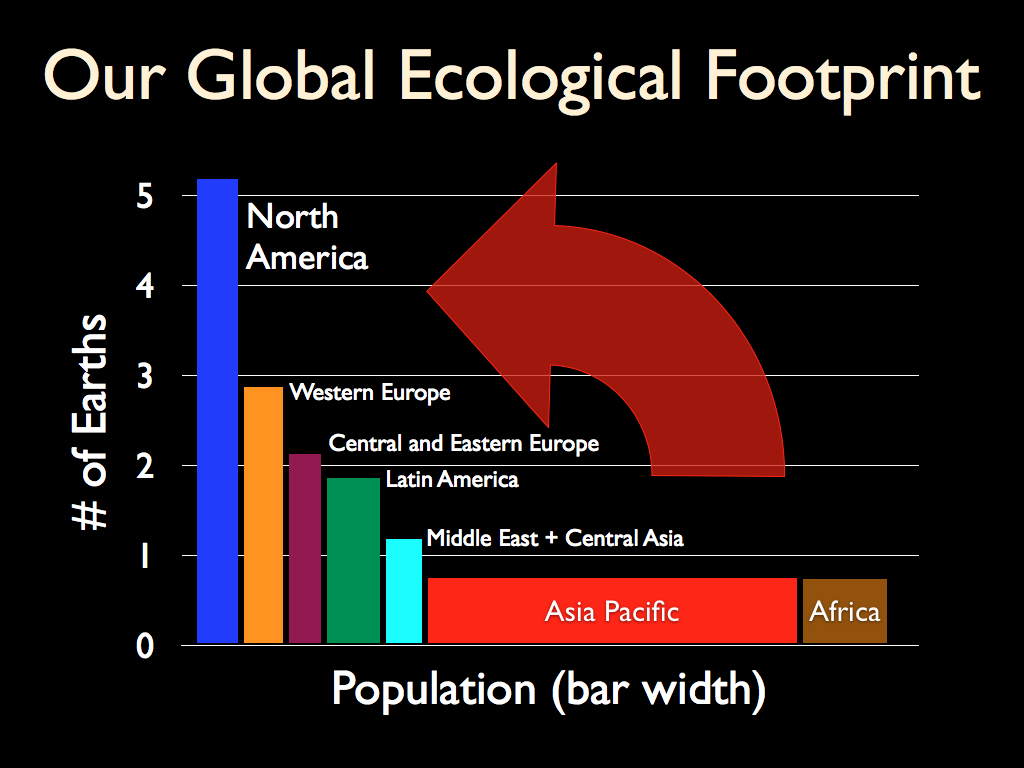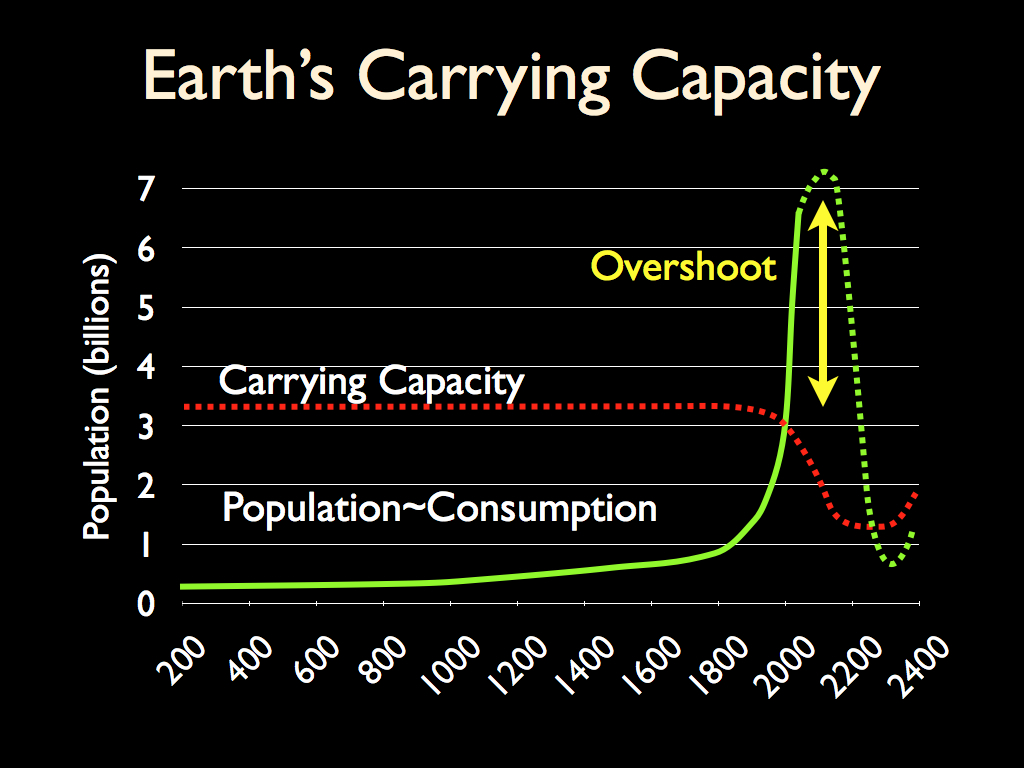When I talk with groups about water, here are some factoids that usually surprise:
- By 2020, California will face a shortfall of fresh water as great as the amount that all of its cities and towns together are consuming today.
- By 2025, 1.8 billion people will live in conditions of absolute water scarcity, and 65 percent of the worlds population will be water stressed.
- To grow a ton of wheat uses 1,000 tons of water. The US is the largest exporter of wheat to the world. When we export a ton of our wheat, we are effectively including 1,000 tons of water in the bargain.
- In the US, 21 percent of irrigation is achieved by pumping groundwater at rates that exceed the water supplies ability to recharge.
- There are 66 golf courses in Palm Springs. On average, they each consume over a million gallons of water per day.
- Lake Meade (the source of 95% of water for Las Vegas) will be dry in the next 4 to 10 years (see picture below).
Water scarcity is a global problem and is not confined to “poor” nations.
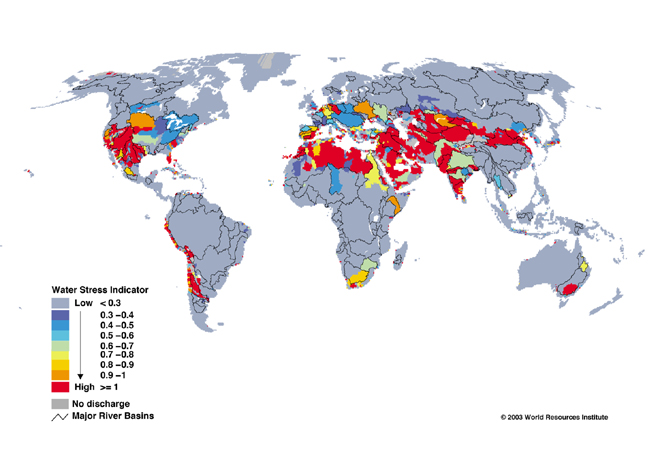
In the US, we are now seeing headlines about droughts in places like Florida, Georgia, etc. – not your traditional areas of drought. A powerful way to understand the pervasiveness of America’s water scarcity problem is through the following pictures.
This first picture shows areas of the US that are experiencing moderate (yellow), severe (red), and extreme (purple) drought.

The picture above is constantly updated, and now, in fall 2011, Texas is experience unprecedented drought. I was driving through Texas a few weeks ago, and at that time, local radio stations talked about how Austin, as just one example, had experienced 72 days in a row of 100 plus temperatures. Here’s a picture of the current (September 27, 2011) drought situation throughout the US. Note that drought levels in most of Texas are at level D4 – “Exceptional.”
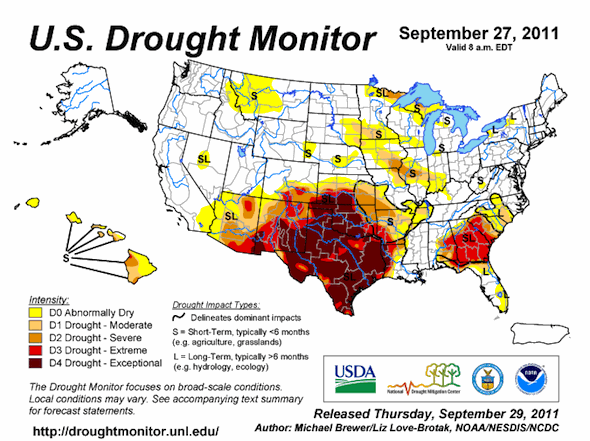
These dry conditions have fostered endless fires that are sweeping across Texas and throughout the Southwest. Predictions are that the drought will likely last for years. Planners will need to make sure public policy on water conservation are in line with emerging water scarcity conditions. When does a drought become a desert?
Shifting the lens toward the Southwest, here’s a picture of Lake Meade, boating haven and water source for Las Vegas. Current estimates predict it will be dry in the next 4 to 10 years.
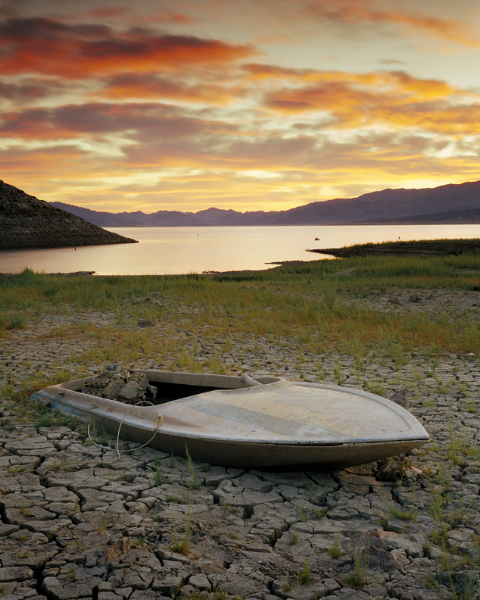
Food production in the “breadbasket” of the US depends on water from the Ogallala Aquifer. The picture below shows where the sharpest declines in water level are occurring.
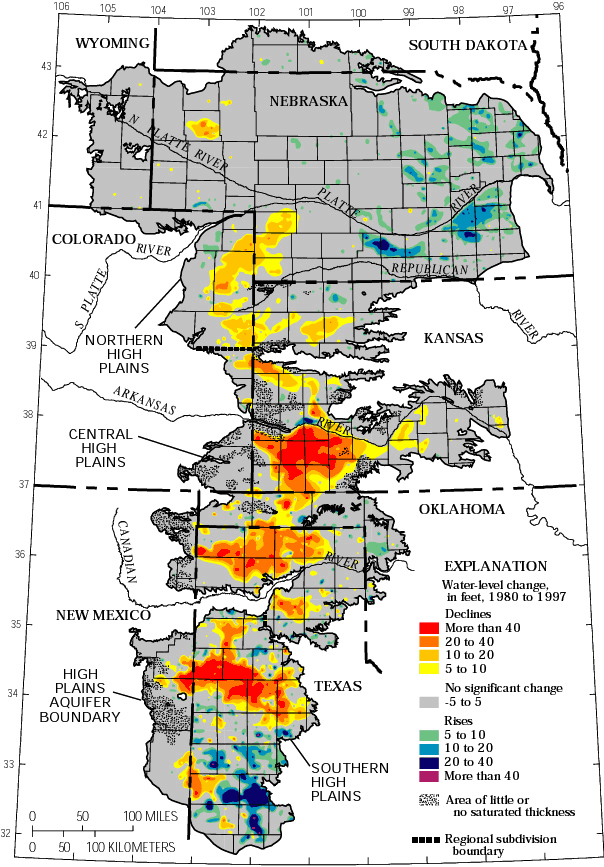
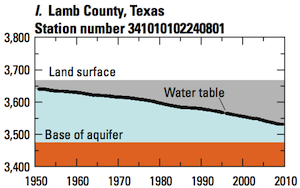
The USGS monitors over 9,000 wells throughout the aquifer. Zeroing in on Texas again, here’s a picture of a typical well in Lamb County, Texas. Monitoring of this well started in about 1950, when irrigation began. This well shows a water table that has fallen steadily, and at current draw rates, this well will be dry in the next decade or so. How will farmers, who depend on a reliable source of water to grow crops and ride through accelerating drought, stay in business? How will the drying of the Ogallala Aquifer effect America’s ability to feed the nation?
A recent article in The Texas Tribune sets out the impact Ogallala water scarcity will have on Texas. This story is not unique and is being played out throughout the 8 state region covered by the Ogallala.
Highlights of the Tribune article:
- The Ogalala aquifer stretches across 8 states and accounts for 40 percent of water used in Texas.
- The Ogallala’s volume will fall a staggering 52 percent between 2010 and 2060.
- The use of big pivot irrigation — the lifeblood of the Panhandle — could be cut back severely in 10 to 20 years.
- Texans are probably pumping the Ogallala at about six times the rate of recharge.
- Water conservation and regulation policy is difficult to implement because Texas views groundwater as essentially a property right.
- T. Boone Pickens business Mesa Water and other companies are buying up water rights, and looking to market water to cities like Dallas. This is creating a variety of court challenges in the struggle to define the line between public and private water rights.
For more information on the critical issues around private and public access to water, read the well-researched Blue Gold by Maude Barlow and Tony Clarke.
